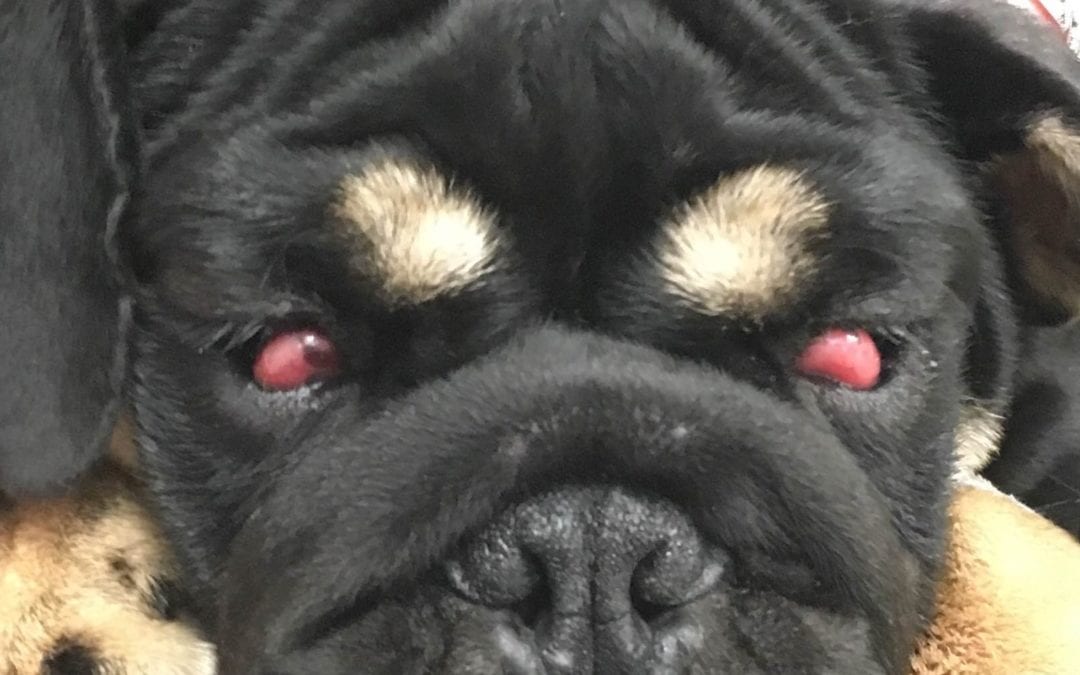Dr. Tofflemire,
My vet said my dog needs surgery to fix his cherry eyes. I want to do it, but I’m scared it’s just going to happen again. Do you recommend surgery?
Hi Deb,
Prolapse of the third eyelid gland, often casually called cherry eye, occurs due to weakness of connective tissues between the third eyelid and nearby structures. This weakness allows the gland, which is tucked beneath the eyeball, to flip upward, where it becomes swollen and inflamed.
The condition may occur in one or both eyes, with the second eye often becoming affected several months after the first. Commonly affected breeds include Cocker Spaniels, American Bulldogs, Beagles, Lhasa Apsos and Mastiffs.
Surgical re-positioning of the prolapsed gland is almost always indicated to prevent chronic conjunctivitis, ocular discharge, and development of keratoconjunctivitis sicca (KCS, or dry eye). There are several standard corrective surgical techniques, all of which work reasonably well with around a 90% success rate.
In cases of surgical failure, pet owners often become frustrated and search online for explanations and alternative options. One alternative option frequently discussed on message boards is third eyelid gland removal. This is rarely indicated as it serves a primarily cosmetic purpose and carries an elevated risk of dry eye and chronic conjunctivitis. In breeds with an above-average risk of post-op recurrence (American Bulldog, Mastiff-type breeds), I often combine or modify surgical techniques to more securely re-position the gland.
-Dr. Tofflemire

